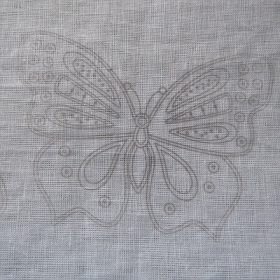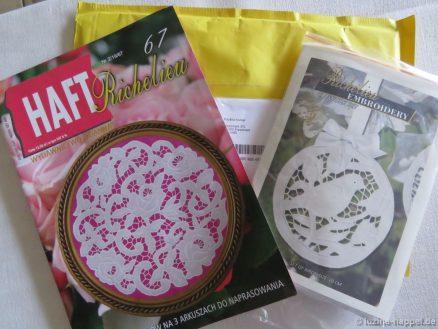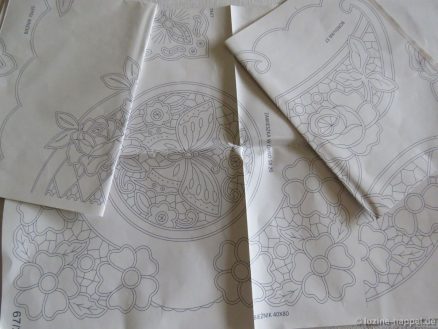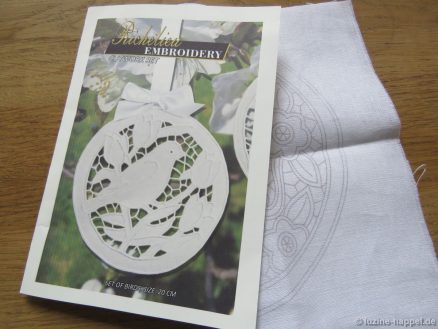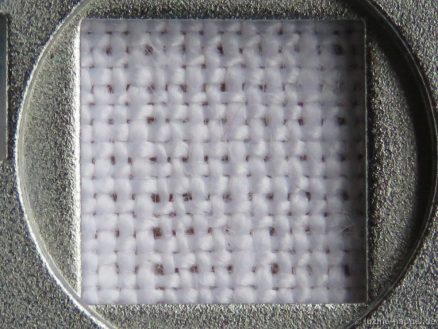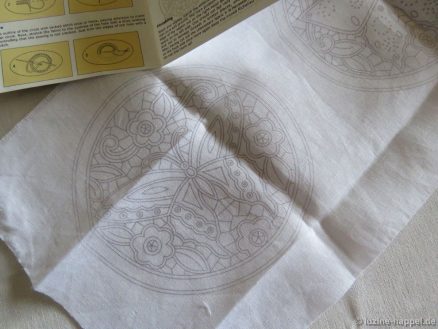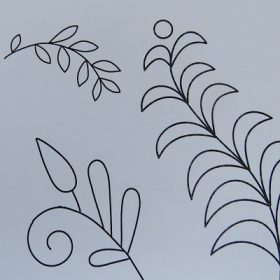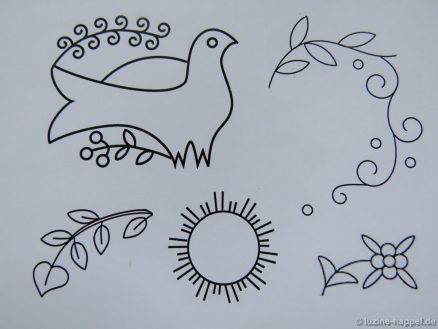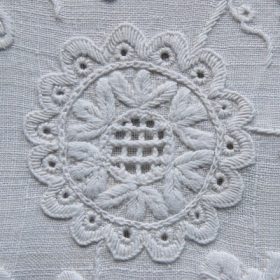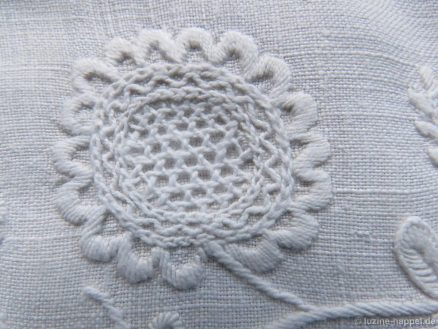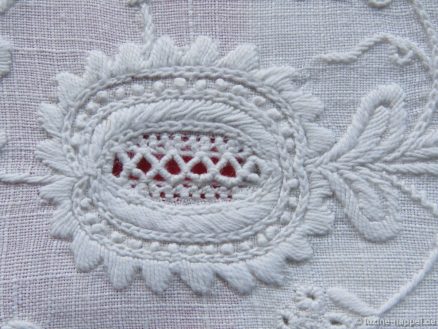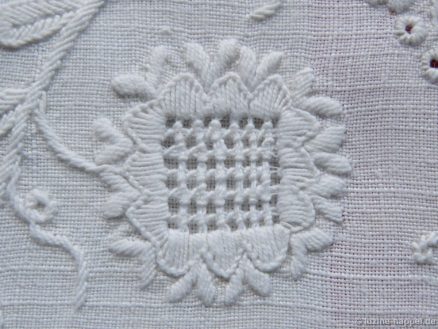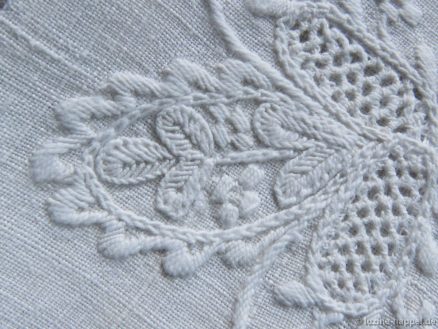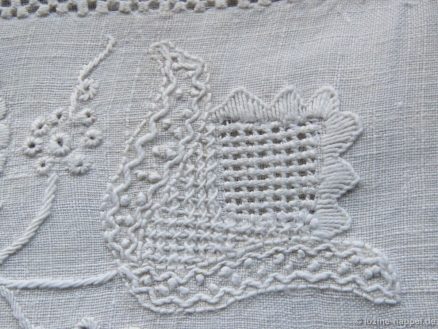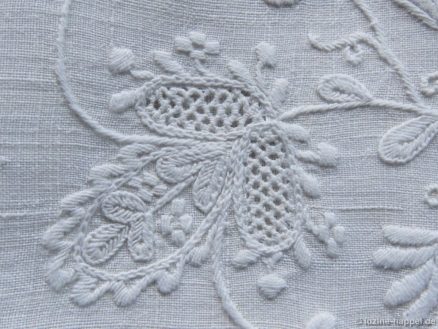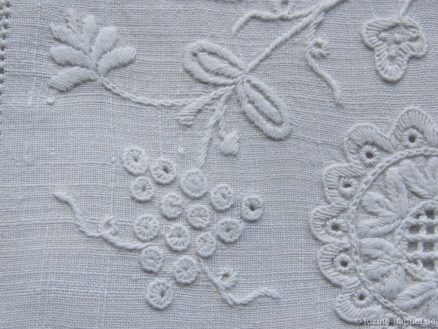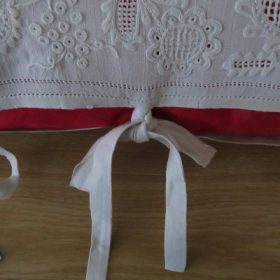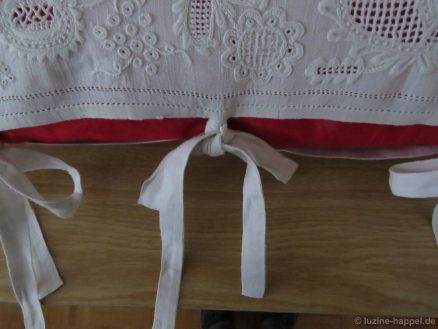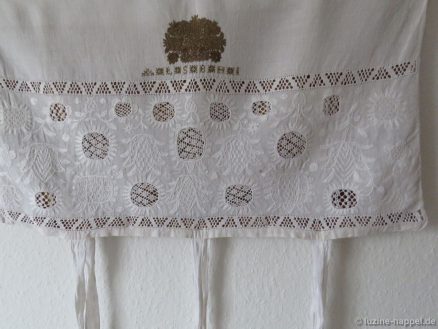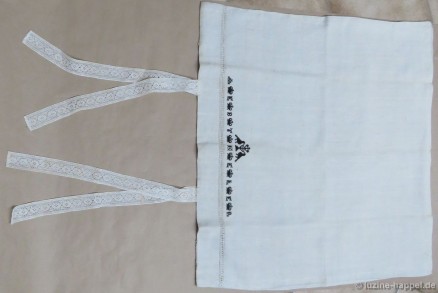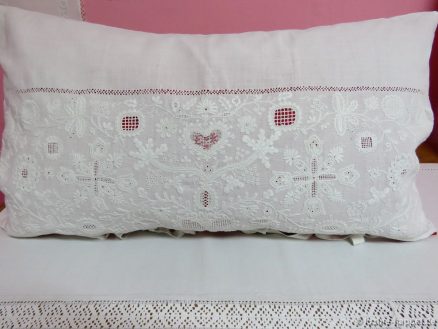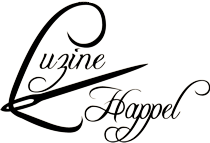My preference is for handicraft, especially embroidery, where I prefer whitework. I concentrated on the Schwalm whitework. So there was little time to practice other techniques intensively. I confess that the noble appearance of Richelieu embroidery has always fascinated me.
Recently I received mail from Poland.
By chance I had heard about Joanna Jakuszewska and her work. she embroiders excellently. She has focused on Richelieu embroidery and designs very diverse beautiful patterns. Drawings for projects of all sizes and shapes make the heart beat faster.
Best of all, she’s found a way to apply these patterns to linen. She offers both ironing pattern sheets and
also kits with cut linen and already ironed patterns.
The fine linen is woven almost evenly and has a cm thread count of 15/16,
as one can clearly see under the thread counter.
It has a pleasant grip. The lines are kept in gray.
Anyone who has ever embroidered a printed pattern appreciates this advantage very much – you save a lot of time with the often cumbersome transfer of the design.
The package also includes an illustrated short description in English.
And when Joanna has a piece of linen left, she likes to include a little pattern to practice.
For all friends of Richelieu embroidery, this is a great option. Joanna’s shop is an interesting source and a huge treasure trove. Just take a look.
The order is uncomplicated, the shipping costs are reasonable and the goods are shipped immediately.
It would be great if such ironing patterns were also available for Schwalm whitework . Of course, I started testing and contacting right away. You will find out more about this later.
